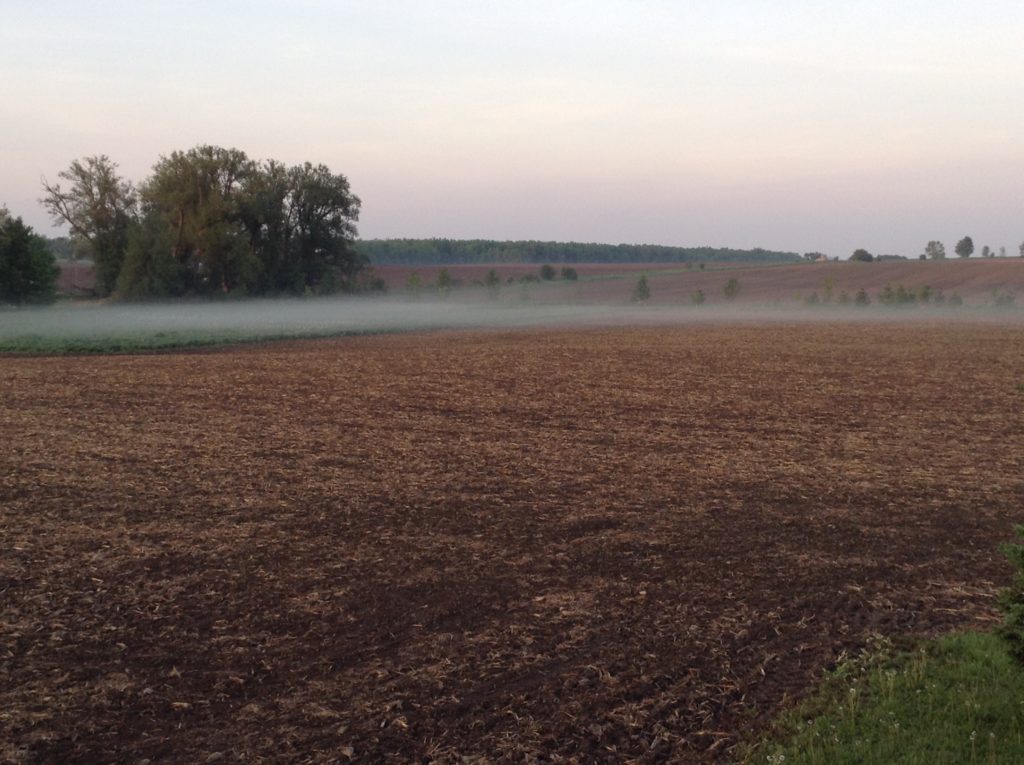When it comes to information about pesticide drift, it’s easy to find and there’s a lot of it. I have an archive of 29 articles written by our Ministry staff spanning 1999 to 2014. There’s so much, in fact, that it sometimes feels like there’s nothing left to say that hasn’t already been said. Here are four common themes – see if you recognize any:
· The Carrot: Outlines benefits to not drifting, like better neighbourly relations, reduced environmental impact and saving money in wasted pesticide.
· The Stick: Insurance adjusters or regulators give stats or case studies warning of the wasted time and the financial, legal, and insurance impacts of drift.
· The Heart: Those impacted by drift vent their frustration and emotional and financial impact, or those accused talk about the conflict, irritation and personal insult of being accused.
· The Facts: Technical specialists lay out math, methods and models of how to keep spray where it belongs with talk of wind-speed, nozzles and pressure.
And these resources aren’t just the written word! There are internet videos, live and archived powerpoint presentations, hands-on workshops and demos, government factsheets, marketing brochures and smartphone apps. And yet, every May/June, the drift complaints roll in regardless. For those that ask “why?” here are a few possible scenarios:
· Maybe busy growers forget a few key best practices with everything else that’s happening on the farm.
· Maybe the applicators that make the effort to access and understand these resources aren’t the target audience.
· Maybe applicators are lulled into false security driving so many acres, for so many hours, for so many years while insulated in the cab of a tractor/sprayer.
· Maybe there are huge disconnects when the land is rented by one person, to a farmer that isn’t there, who has their fields sprayed by custom applicators, who don’t know what’s around the field.
· Or maybe, just maybe, even the best applicator can have bad luck.
And who is to blame when drift happens? We hear about field crop applications damaging horticultural operations, but it’s more than that. Horticultural and field crop applications can drift onto residential areas, sensitive environmental areas or onto one another. Commercial operations can drift onto organic operations. A single operation can even drift an incompatible chemistry onto itself!
Communication between neighbours can make such a big difference, both in preventing drift and in dealing with an incident if it occurs. Here are two ways to look at the same situation – which one will be easier to resolve?
1) A “wheat farmer that drives 20 miles per hour in high winds” is accused by a MOECC officer on behalf of an “angry tomato guy that’s always complaining about something”. The court date is on the 5th.
2) Sarah knocks on Kevin’s door and says there might be something wrong with her crop – can he come have a look? She has (rightfully) contacted the MOECC to collect samples just in case, but she asks if they can discuss it to figure out what happened, how to deal with it and how to prevent it down the road.
Once there’s a face and a name, it’s so much easier to find solutions. It doesn’t mean someone wasn’t in the wrong, or that money shouldn’t change hands, but the dialogue makes everything faster, easier and less emotional. And it works both ways – the potential driftee can make themselves known to the potential drifter as easily as the other way around. Both parties benefit from keeping one another informed about when sprays go on and the state of any sensitive crops.
So the core of this article isn’t how to prevent drift, or what to do if you suspect it. That’s all been said and a few key resources are listed below for reference. This article is about being aware of drift, about opening lines of communication between those that share borders, and about knowing where to get the right information if it’s needed.
In the meantime, share this article. Learn more when you can. Go introduce yourself to your neighbour.
Resources:
- Article – Includes 4 videos and a factsheet about what drift is, how to prevent it and what to do if you suspect it.
- Powerpoint presentations – Drift basics and mitigation.
- Narrated powerpoint presentation – Drift and vegetative barriers.
- Article – Includes a video and a factsheet about surface inversions and drift.
- Article – Spraying in the wind.
- Video – The time of day can affect drift potential.
- Video – Spray quality (i.e. droplet size) and how it relates to drift.
- Articles – Reducing travel speed and employing other means of increasing efficiency.
- Article – Drift-reducing nozzles.
- Power Point presentation – Nozzle selection and low drift.
